Paper trail: Collector traces Singapore’s history through wartime propaganda leaflets
Sign up now: Get ST's newsletters delivered to your inbox
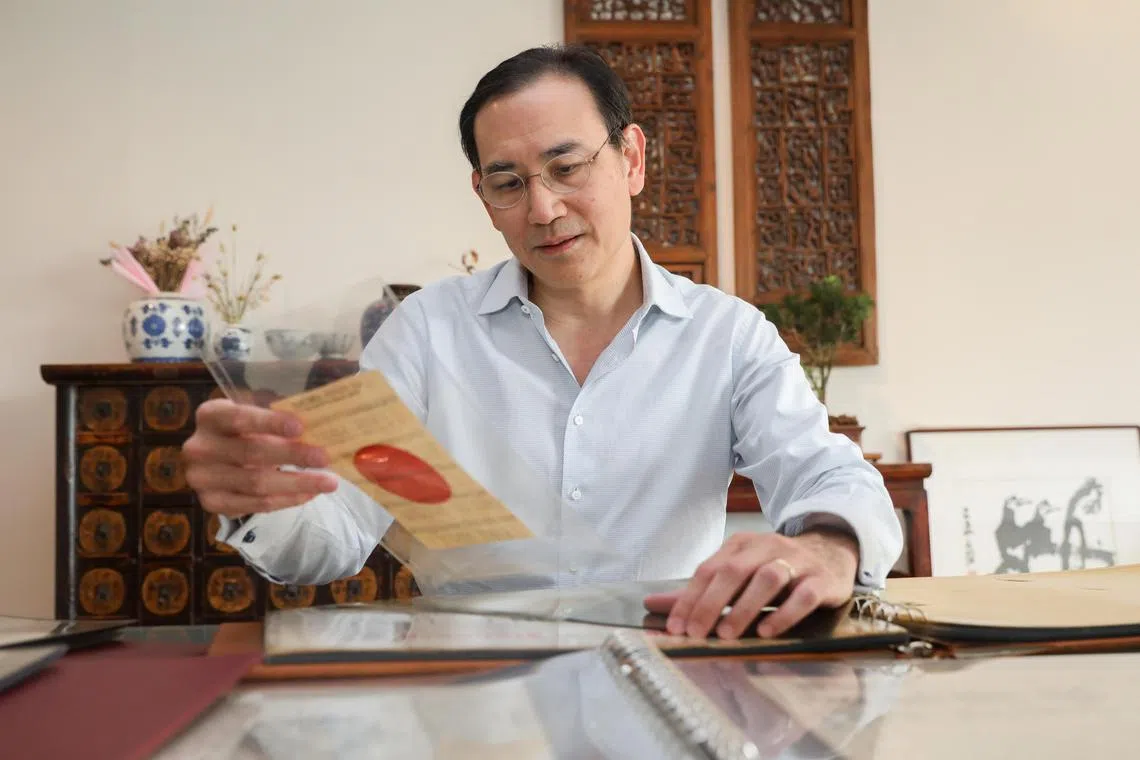
Dr Benjamin Seet looks through his 30-year collection of propaganda leaflets used in Singapore, Malaya & SEA.
ST PHOTO: LUTHER LAU
Follow topic:
SINGAPORE – “Cease firing. Stop all firing forthwith. Lay down your arms and raise the white flag.”
This surrender note, circa February 1945 and signed off by General Archibald Wavell of the Allied Forces, was in fact not penned by him. It was a forgery by the Japanese army invading Malaya, meant to mislead the British forces into surrendering.
This rare copy of black propaganda – a genre of propaganda that aims to deceive through false attribution – used to be in the hands of a private collector.
But it will now be part of Singapore’s national archives.
On Aug 15, Dr Benjamin Seet handed over his collection of more than 900 pieces of propaganda leaflets to the National Library Board (NLB), which will be conserving and digitising the collection.
“This collection is too important to remain in private hands,” said Dr Seet, 59, group chairman of the medical board for research at the National Healthcare Group.
Dr Seet kept his collection, categorised in 11 archival-quality albums, in an air-conditioned room. But he said the library will be better able to digitise, archive and preserve it.
The leaflets in his collection date back over 80 years and span two volatile periods in Malaya’s history: World War II, when the Japanese occupied Malaya between 1942 and 1945, and the Malayan Emergency.
Fought from 1948 to 1960, the Malayan Emergency was a guerilla war between British colonial forces and communist fighters seeking to overthrow British rule in Malaya.
National Library director Alicia Yeo told The Straits Times: “This is an important collection which will enhance the study of these two major events in Singapore and Malayan history.
“We are honoured that Dr Seet has chosen to entrust this unique collection to the Library, (allowing) it to be accessed by researchers and the public.”
The black propaganda leaflet ordering British troops to surrender to the Japanese had likely been airdropped on Feb 10, 1942. It had then been picked up by a school principal in Johor Bahru.
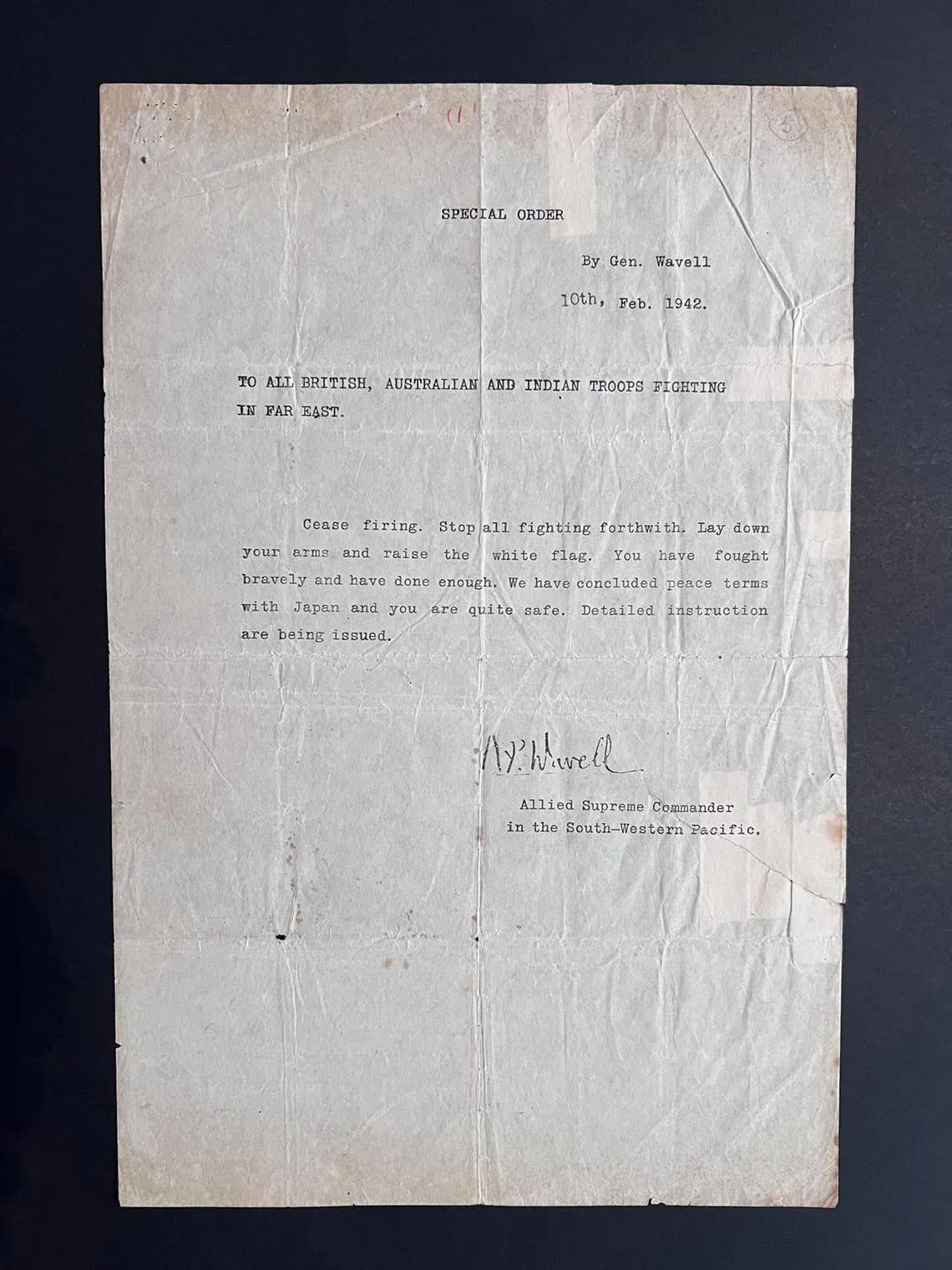
A letter forged by the Japanese army, purporting to be from the Allied Supreme Commander in the South-west Pacific Area, instructs British troops to surrender. It was dropped over British troops in 1942, before the start of the Japanese Occupation.
PHOTO: BENJAMIN SEET
Back when there was no television and the radio was hijacked by the invading Japanese army, leaflets dropped from planes were the main ways to communicate with the population. They were used to garner support from the locals, boost morale, or undermine the enemy’s resolve.
Certain signs betrayed that the message it bore was fake, said Dr Seet.
For example, the British surrendered on Feb 15, 1942, but the letter – dated Feb 10 – indicates that it was dropped before actual talk of surrender, in order to trick the Allied troops to yield.
And for such a significant announcement, it should have been printed with the official British letterhead, he added.
His collection also includes leaflets declaring the end of the Japanese Occupation, translation documents, clippings of old copies of The Straits Times and the now-defunct Singapore Standard newspaper, from 1955.
Another item is the diary of a communist officer from the Malayan Emergency.
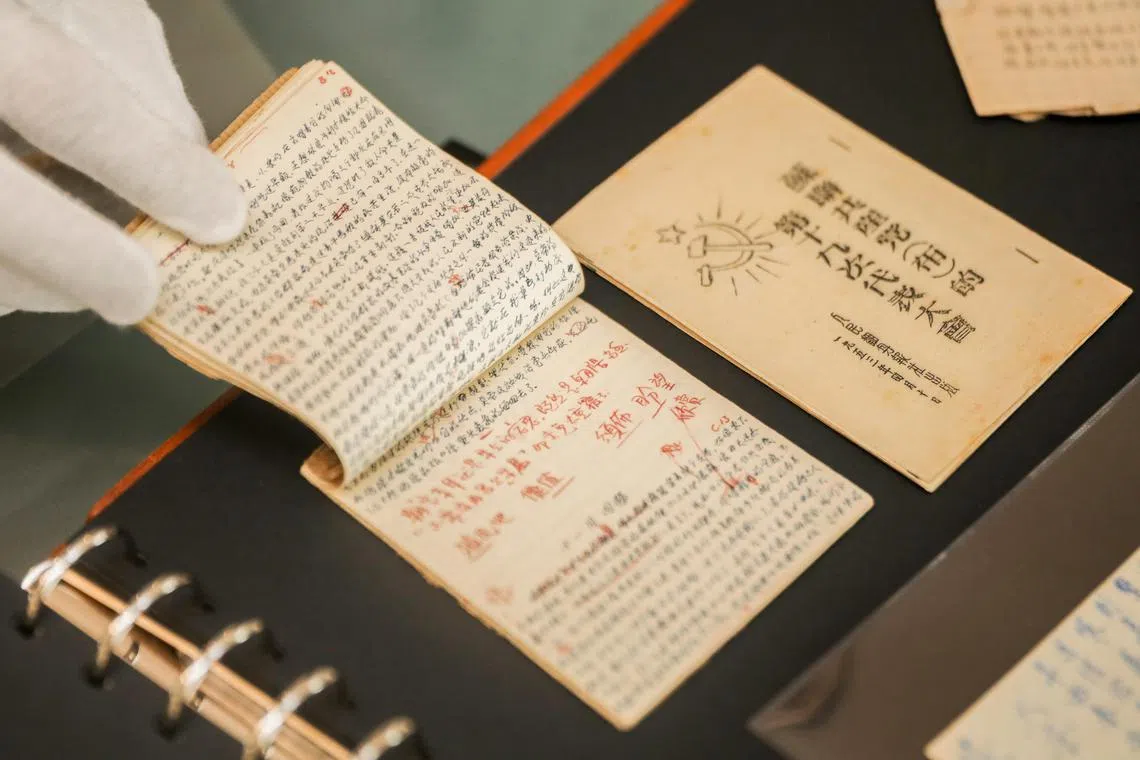
A communist officer’s palm-size diary, with tiny handwriting to save paper. Edits in red were made by a political secretary correcting the doctrine, said Dr Seet.
ST PHOTO: LUTHER LAU
The palm-size booklet had text written using a tiny script to save paper. Notably, edits in red indicated that a political secretary had corrected the doctrine, said Dr Seet.
His collection also includes Malayan Communist Party publications printed for use by communists in jungle camps.
Printed on exercise book paper with mobile presses, they were kept small so they could be easily hidden and carried around. The collection even includes a small volume, Stories Of Marx, in Chinese.
These were communist materials compiled by the British Royal Air Force for military reference. Someone working at the office likely decided to keep the folder as a souvenir, and it eventually landed in Dr Seet’s collection.
“If you were seen with these materials 40 years ago in Singapore, you’d probably be arrested,” said Dr Seet, as communism was a greater threat back then.
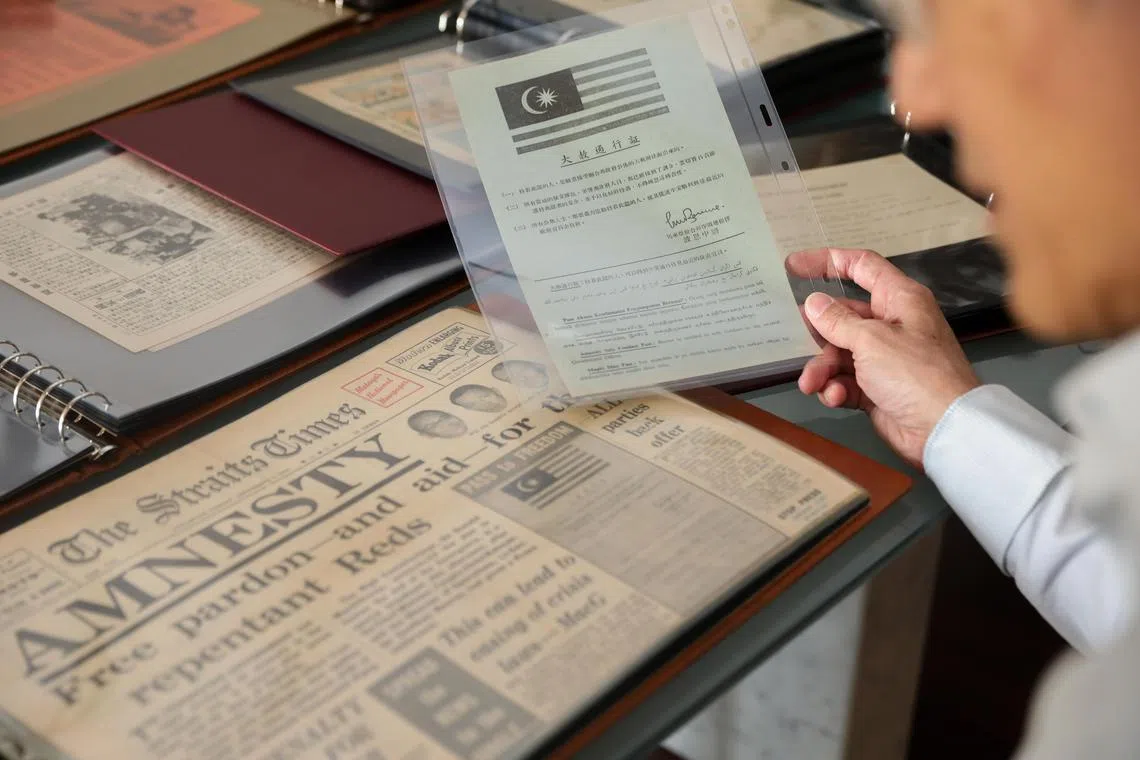
A copy of The Straits Times from 1955 about the safe-conduct pass for surrendered communists, with a copy of the actual safe-conduct pass.
ST PHOTO: LUTHER LAU
“When you put it together, it’s (more than) 900 pieces of paper that tell different stories from these two wars,” he added.
Dr Seet is a self-professed “aerotractologist”, a term he uses for people who study and collect airdropped propaganda leaflets used in warfare.
Airdropped propaganda leaflets are rare. For instance, few survived the rough conditions of the Malayan jungles, where many were dropped. The ones that did survive often were not dropped, but had been taken as wartime souvenirs by air force pilots and psychological warfare officers. A handful of pieces from Dr Seet’s collection also came from captured or surrendered communists.
His quest for these historical artefacts began 30 years ago.
Upon visiting an old stamp shop in London, Dr Seet, who is fascinated by military history, saw a few leaflets and was intrigued.
From there, he joined the UK-based Psywar Society – a group of around 200 global members then, interested in military propaganda and psychological warfare – and the rest is history.
“When you hold a piece of the past in your hands, it tells a story. Part of collecting is to uncover these stories and to put it all together in a larger narrative. This is particularly important in times of war or conflict, where so much of our history is lost or not well captured,” said Dr Seet.
It is a niche hobby; the Psywar Society closed down more than 10 years ago due to dwindling membership.
But for Dr Seet, his interest only grew as he collected more pieces.
Scouring auctions and eBay, and buying from other collectors, what started as just an interest in military history expanded into a large-scale passion project.
He reached out to NLB earlier in 2024, after realising that his collection had grown “too big for a private collection”.
“Collecting is a disease and addiction – you don’t know when to stop. But having put together what is probably the largest and most comprehensive collection of propaganda leaflets used in this part of the world, there is less motivation to add to it,” said Dr Seet.
Still, having spent so much time and effort collecting over the years, he feels sad to part with his collection. “When I look at it like this, I’ve got half a mind to take it back,” he said.
While he has moved on from collecting propaganda leaflets, Dr Seet said he is working on publishing a book on the leaflets and organising an exhibition with NLB in a few years’ time.
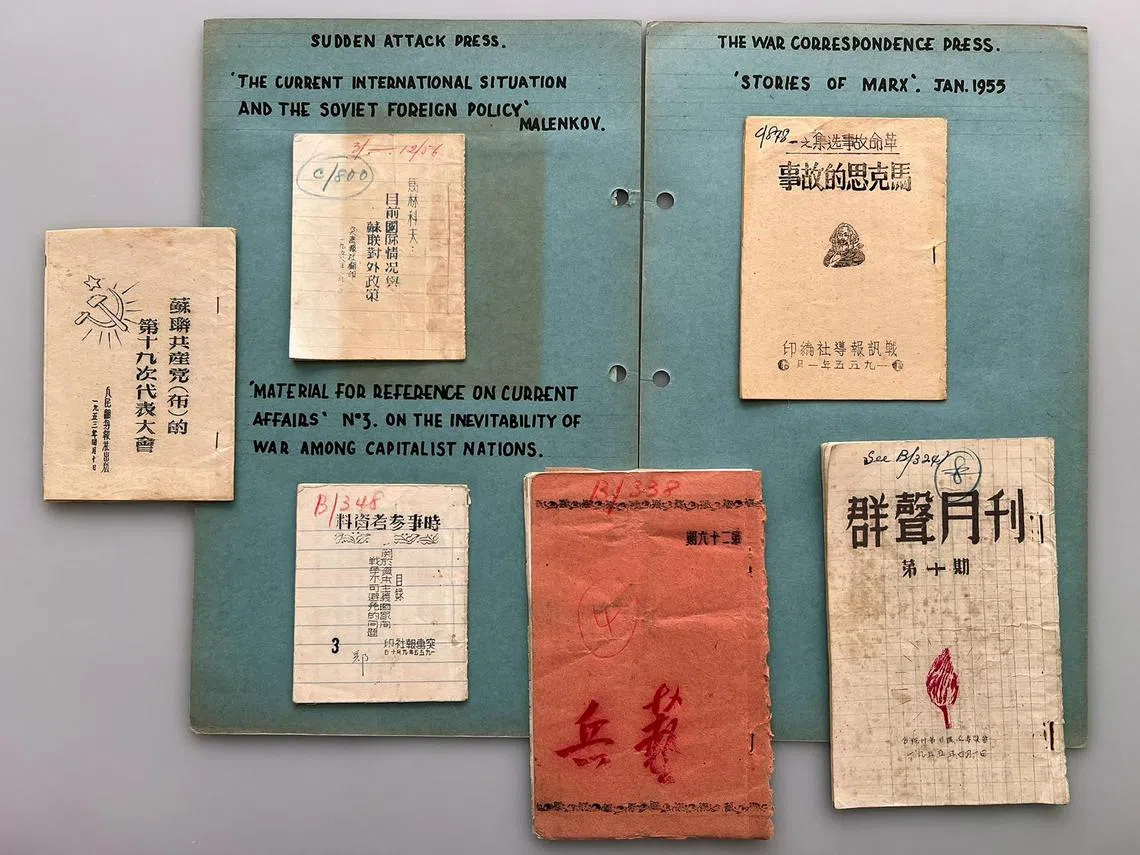
A series of Malayan Communist Party publications, printed for use by communists in jungle camps, and kept small so they could be easily hidden and carried around.
PHOTO: BENJAMIN SEET
How much did he spend on his collection? “I don’t know how much, and I don’t want to know,” said Dr Seet.
Prices can range from tens of dollars to thousands, but it is hard to put a price on history, he added. “If there’s something that has only one piece in the world, how much is it worth? That’s the thing about this collection – it’s worth as much as you’re willing to pay for it.”
Dr Seet is not the first private collector to donate artefacts to NLB, but Ms Yeo said she hopes that he will not be the last.
“Private collectors, with their varied collections, complement the collections by institutions under NLB, like the National Library and National Archives of Singapore,” she said.
“Our capabilities in conservation and preservation are perhaps in part why collectors tell us they are confident and willing to donate their collection to NLB. We will work towards making them accessible for generations to come, including in digital formats for more people to easily access,” she added.
Due to the sheer volume of his collection, Dr Seet noted that it will take a while for NLB to go through and document all the items. The collection will eventually be part of the rare materials collection, accessible only by request.
He is looking forward to sharing these rare historical snippets, some of which are the only surviving pieces, with a wider audience. “This collection is too important for me to be the only one who gets to see them,” said Dr Seet.


